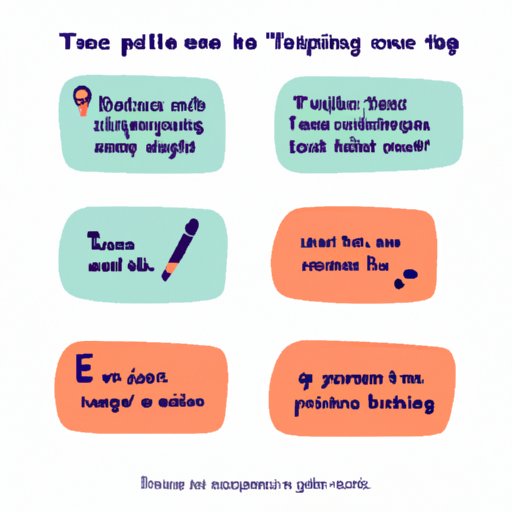
Introduction
Do you struggle with keeping readers interested in your writing? Maybe you’ve been told your writing is “dry” or “boring”. This common problem can make it difficult to get your ideas across and connect with your audience. In this article, we will discuss strategies for avoiding dry writing and creating engaging content.
Identify Your Personal Style
One important aspect of making your writing more interesting is understanding your own personal style. Each writer has their own unique way of expressing themselves, and becoming aware of your own style can help you to focus on your strengths and address any weaknesses. To identify your style, try reading your old work and reflecting on what makes it stand out. You can also ask for feedback from peers on your writing style and see what they have to say.
Use Active Verbs
Active verbs can add movement and energy to your writing, which can make it more engaging for readers. Avoiding passive verbs is a key strategy to achieving this. Passive verbs can make your writing sound dull and lifeless. Compare these two examples:
Passive: The cake was baked by Sarah.
Active: Sarah baked the cake.
The second example feels more immediate and energetic because of the use of the active verb.
Add Personal Anecdotes
Adding personal anecdotes can help to make your content more relatable and connect with your readers on a more personal level. Including personal experiences can also give readers an insight into who you are as a writer and why you’re passionate about the topic you’re writing about. For example, if you’re writing an article on how to be a successful freelancer, you could include a story about how you first got started and what challenges you faced along the way.
Vary Your Sentence Structure
Using a mix of short, long, simple, and complex sentences can keep readers engaged and make your writing more interesting. Short sentences can be used for impact, while longer sentences can add detail and nuance. Here’s an example of a mix of sentence structures:
She woke up early and got dressed for the day. To her surprise, it was snowing outside. She grabbed her warm jacket and stepped out onto the porch. The snow was soft and powdery, and it looked like a winter wonderland.
This example mixes short, declarative sentences with longer, descriptive sentences to create a vivid image for the reader.
Include Visual Elements
Adding visual elements such as images, videos, or graphics can make your content more engaging and help break up the text. You don’t have to be a professional designer to create high-quality visuals. There are many free or low-cost tools available online that you can use to create images, videos, and graphics. For example, Canva is a great platform for creating social media graphics.
Conclusion: Finish Strong
To create truly engaging writing, it’s important to keep your readers in mind. As writers, our goal is to connect with our readers and convey our ideas in a clear and interesting way. By identifying your personal style, using active verbs, adding personal anecdotes, varying your sentence structure, and including visual elements, you can make your writing more engaging and enjoyable to read.
Final Thoughts
Remember, writing is a skill that takes practice. As you incorporate these tips and techniques into your writing, you’ll find that your content becomes more dynamic and engaging. Don’t be afraid to try new things and experiment with different styles and strategies. With dedication and persistence, you can become an engaging and effective writer.




